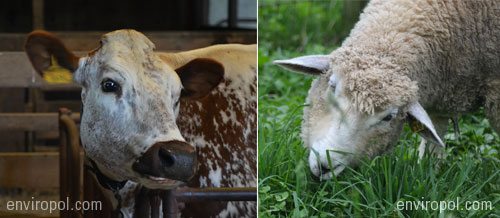Any activity directed to forests resources, with the intention of using the trees or land created for other purposes is deforestation. Trees may be cut down for logs or burned to make room for farms, construction or other economic purposes.
The driving forces of deforestation are very complex but weigh heavily towards economic needs of local communities, countries and large multinational industries. Here are a few:
Soy, palm oil and other crop plantations
Palm oil, a very popular ingredient in many foods and now very common for its use for biodiesel (fuel for transport industry), together with soya, which is used in many foods and animal feed, are two major crops that require a lot of space to cultivate. These two, together with banana and others have contributed and still contribute to the loss of large forest areas.
High demand for wood (logs or timber)
More need for pulp and paper, wood for furniture, real estate construction fuel all mean that trees will be cut down. World population is growing and more than ever before, our needs have increased too. —Increasing demand was specifically cited as an underlying cause of deforestation by the workshops in Bangladesh, Cameroon, Ecuador, Papua New Guinea, and the Philippines. El Salvador, for example, pointed to the sale of timber to sawmills, and Nepal noted an increased number of furniture factories. Nepal and Kenya both listed the use of timber for house-building as a key issue1
— Logging is the principal threat to the tropical rainforests of Cameroon, Congo and Gabon. It is estimated that every year 137,000 hectares are logged in these three countries alone2
Animal grazing fields

In many places in the world, animal farms have contributed to large areas of green space being converted to grazing fields. Classic cases can be found in Brazil. Animal rearing in the Amazon has increased remarkably over the past few decades, obviously because of the increase in demand for meat products over the world. Since 2002 cattle rearing expansion increased by about 30%. It is known that 80% of brazils livestock population can be found in the Amazon, specifically in the states of Mato, Grosso, Pará, and Rondônia, which were also the states with the greatest deforestation in 20023
Construction
New settlements, roads and industries springing up in many forest places surely add to the problem we face with deforestation today. As roads are constructed to access remote areas in these forests, they act as a magnet for new settlements. Once people begin to settle too close to forests areas, they begin to rely on the resources from that forest to make a living. For example: In 2014, the Amazon Forest Monitoring Program mapped out approximately 1,123 settlements that resulted from deforestation. 81% of them were concentrated in the states of Pará, Rondônia and Mato Grosso, especially along the Arc of Deforestation 4
Others
Other factors include trade policies such as those that discourage certain foods and rather encourage production of soybeans. Another cause of deforestation may be the poorly implemented environmental regulations that encourage landowners to convert forest lands to plantations, without any regard for authority and laws.
